Replantation of digits - series
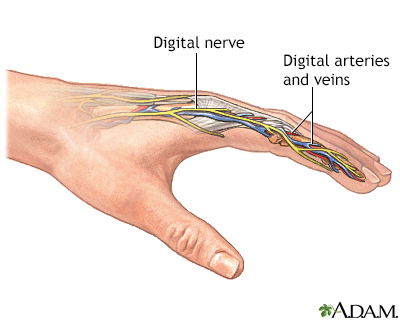
Normal anatomy
The fingers and toes are supplied by vessels and nerves which run up the lateral aspects of each digit.
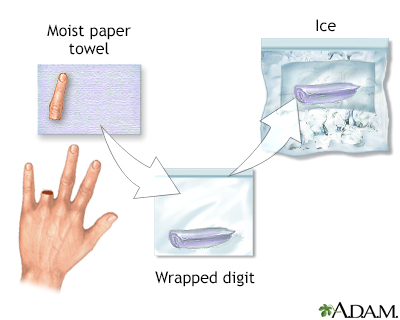
Indications
The surgery is recommended in a case of amputated fingers or toes, with salvaged digits in a condition that would enable replantation. This usually requires a clean cut across the digit, with minimal damage to the digital vessels and nerve. Amputated digits should be brought to the hospital with the patient, wrapped in moist paper towels, in a plastic bag, and on ice. Ice should be placed in a second plastic bag, into which the first plastic bag containing the severed digit is placed, to prevent direct contact between the ice and the severed digit.
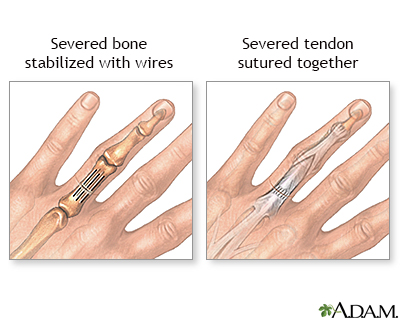
Procedure, part 1
While the patient is sleepy (sedated) or deep asleep and pain-free (regional anesthesia or general anesthesia),the bone ends are shortened to eliminate tension on the repaired vessels. The bone is stabilized with wires. Tendon repairs are done next.
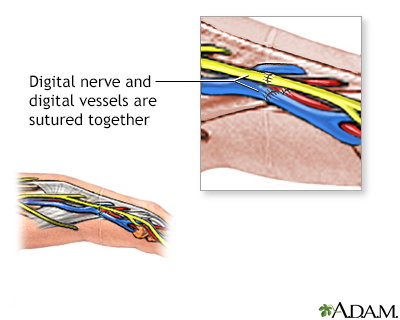
Procedure, part 2
Digital nerves and vessels are repaired with microsurgical instruments. This part of the surgery is most critical to its success. The skin is then closed. A bulky dressing is applied. Young children may have a cast applied to protect the area from injury.
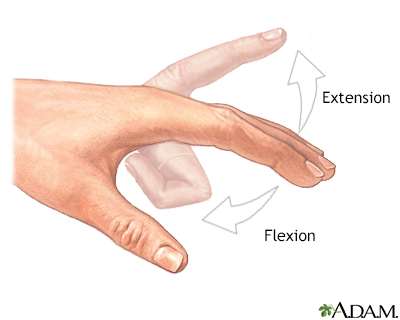
Aftercare
The function of the replanted digit varies depending on the type of injury, the quality of the repair, and the post-operative healing course. Physical therapy after surgery is required to optimize function.
BACK TO TOP
Review Date: 9/20/2022
Reviewed By: C. Benjamin Ma, MD, Professor, Chief, Sports Medicine and Shoulder Service, UCSF Department of Orthopaedic Surgery, San Francisco, CA. Also reviewed by David C. Dugdale, MD, Medical Director, Brenda Conaway, Editorial Director, and the A.D.A.M. Editorial team.

Health Content Provider
06/01/2025
|
A.D.A.M., Inc. is accredited by URAC, for Health Content Provider (www.urac.org). URAC's accreditation program is an independent audit to verify that A.D.A.M. follows rigorous standards of quality and accountability. A.D.A.M. is among the first to achieve this important distinction for online health information and services. Learn more about A.D.A.M.'s editorial policy, editorial process and privacy policy. A.D.A.M. is also a founding member of Hi-Ethics. This site complied with the HONcode standard for trustworthy health information from 1995 to 2022, after which HON (Health On the Net, a not-for-profit organization that promoted transparent and reliable health information online) was discontinued. |
The information provided herein should not be used during any medical emergency or for the diagnosis or treatment of any medical condition. A licensed medical professional should be consulted for diagnosis and treatment of any and all medical conditions. Links to other sites are provided for information only -- they do not constitute endorsements of those other sites. © 1997- 2024 A.D.A.M., a business unit of Ebix, Inc. Any duplication or distribution of the information contained herein is strictly prohibited.
